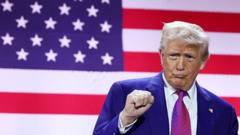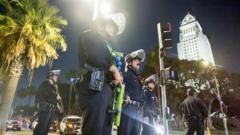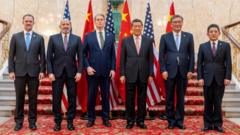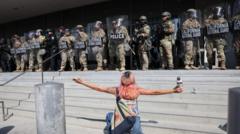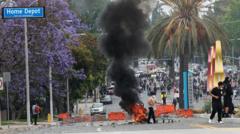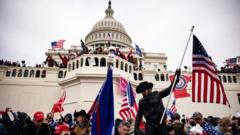As the integration of a new aircraft looms, the complexities of retrofitting an external gift present significant challenges for the US presidency.
**Trump's Air Force One Dilemma: Seeking a New 'Palace in the Sky' Amid Upgrades**
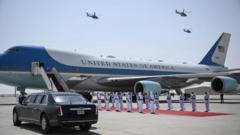
**Trump's Air Force One Dilemma: Seeking a New 'Palace in the Sky' Amid Upgrades**
A potential foreign gift from Qatar raises questions about the future of Air Force One and its luxurious interior.
In an era marked by changing global partnerships, the future of Air Force One may take a dramatic turn if President Donald Trump accepts a lavish offer from Qatar. The proposal involves a $400 million 747-8 aircraft, which would serve as a modernized version of the iconic presidential jet. This potential move comes at a time when the existing fleet, consisting of two aging 747-200Bs, has become increasingly costly to maintain.
Air Force One is not just a means of transportation for the president; it is a symbol of American power and authority, recognized worldwide. The aircraft is outfitted with secure communications, in-flight refueling capabilities, and superior safety features. The interior of Air Force One is designed for functionality over luxury, yet it includes comfortable seating comparable to first-class domestic flights, features a bathroom, and offers onboard snacks—like the exclusive Air Force One-branded M&Ms.
However, the repercussions of accepting a gift from Qatar are layered with legal and ethical implications, alongside practical considerations for retrofitting the aircraft to meet the stringent security and technology standards required for presidential transport. Richard Aboulafia, an aviation analyst, notes that adapting a foreign jet to safely and effectively serve as Air Force One could require extensive modifications and could span years. The intricacies involve disassembling every component to address potential security risks.
Trump, who has a personal history with private jets and was vocal about his desire for updated aerial transport during his first term, is intrigued by this offer as an immediate solution. His frustration with the current state of the aircraft was apparent when he alluded to being embarrassed by the fleet's age.
As the Air Force prepares to retire the existing 747s that have served the country for decades, they leave behind a legacy that includes transporting multiple presidents through pivotal moments in history. From President Bill Clinton flying to bereavement ceremonies to President George W. Bush maintaining communication during the 9/11 attacks, the aircraft has been central to many significant events.
Despite possible future upgrades, critics argue that the acceptance of Qatar's gift raises questions about the president's accountability and the potential influence of foreign nations. The complex blend of tradition, security needs, and global diplomacy will undoubtedly shape the future of Air Force One. As discussions continue about both the Qatari gift and the impending delivery of new models from Boeing, the adjustments to presidential transport represent more than mere upgrades; they signify the United States' ongoing commitment to maintaining its prestige and capabilities on the global stage.


